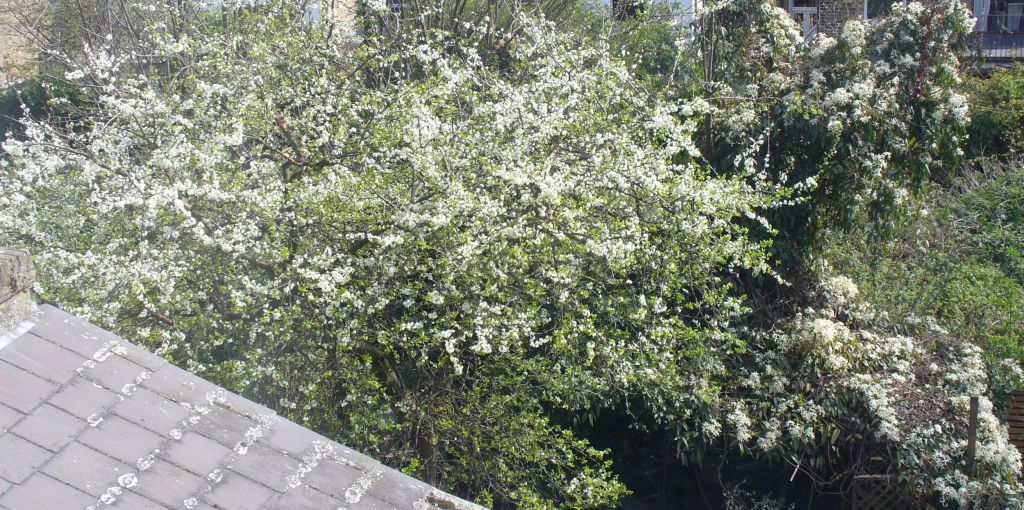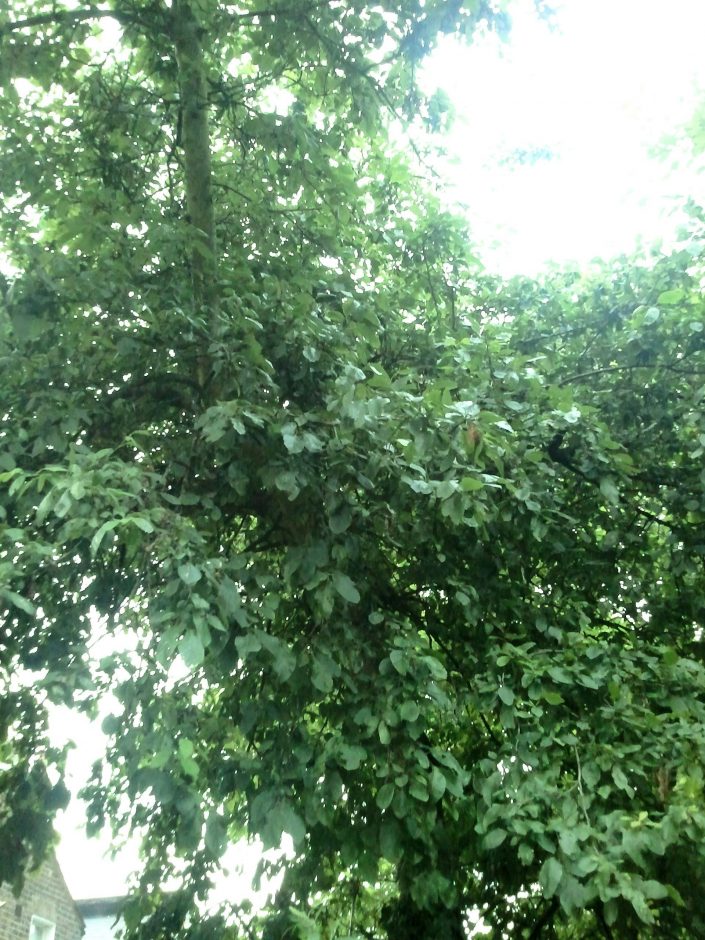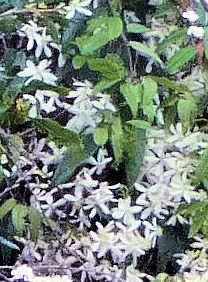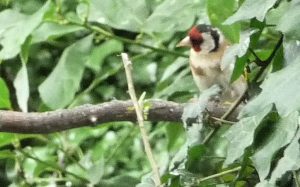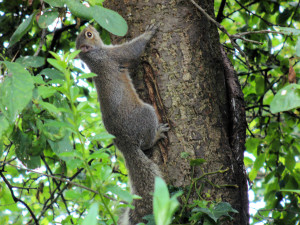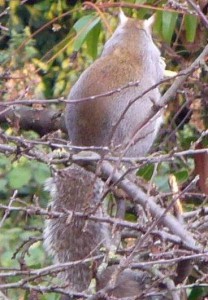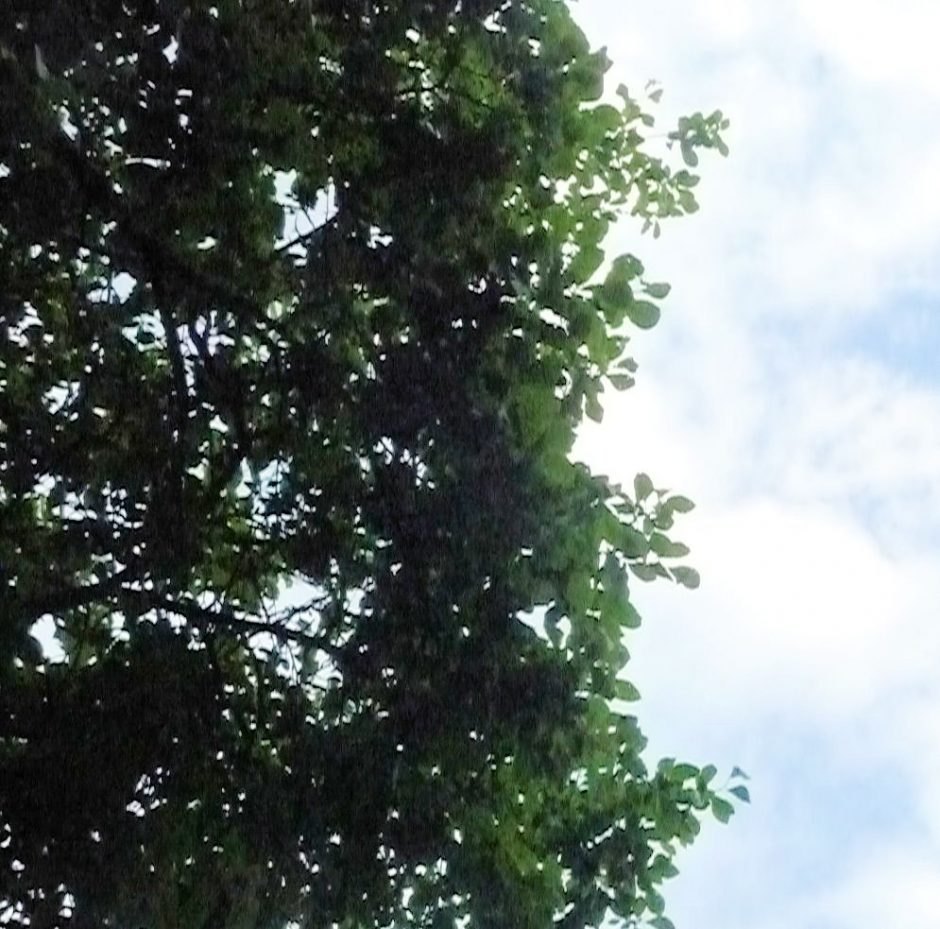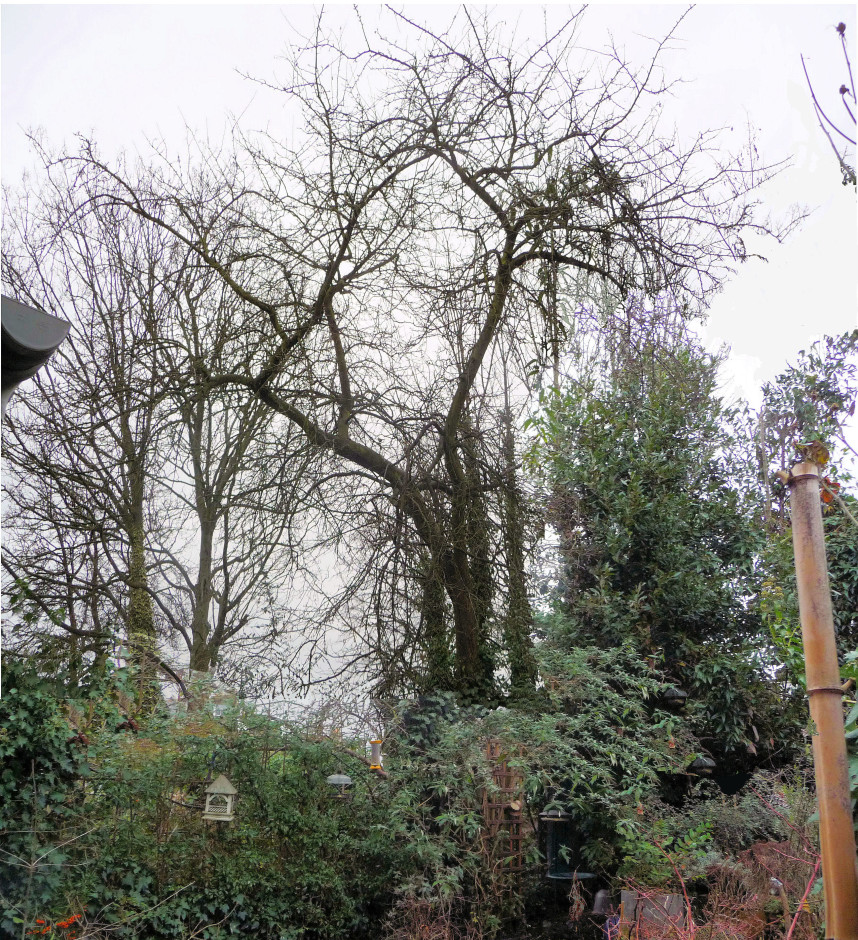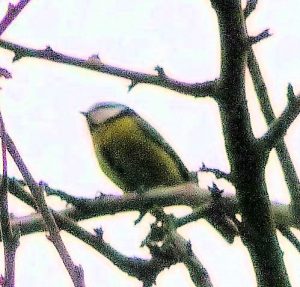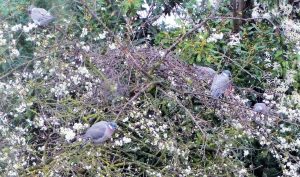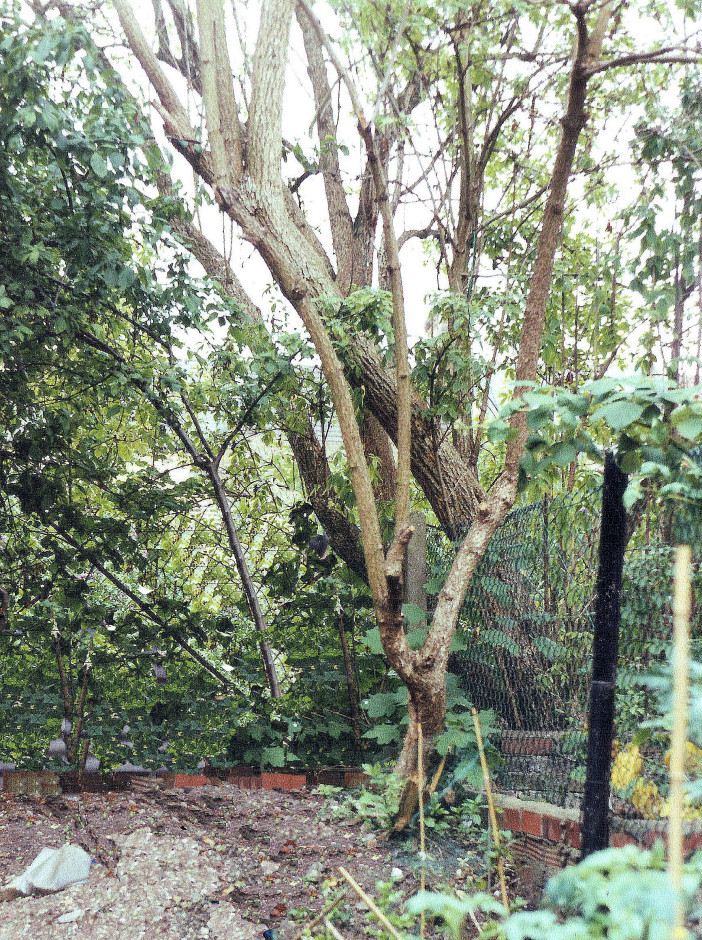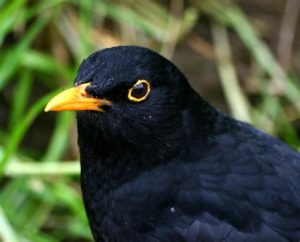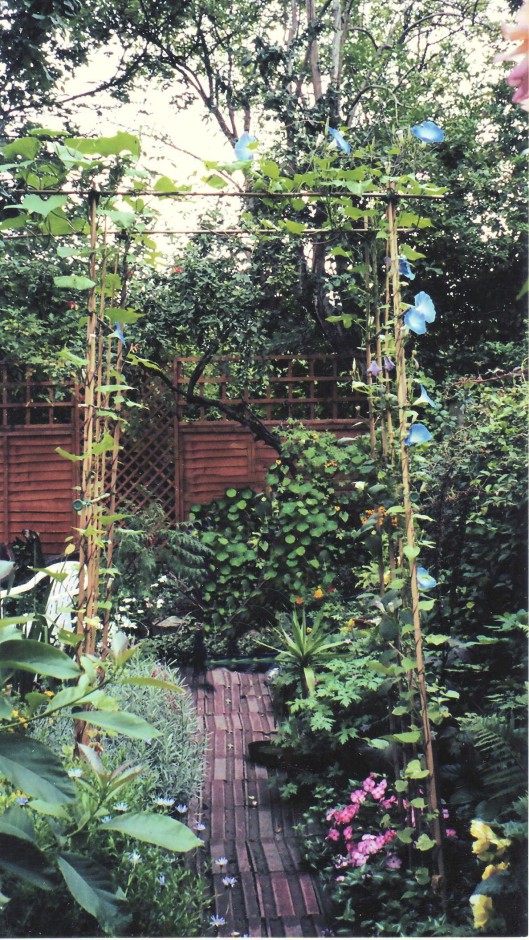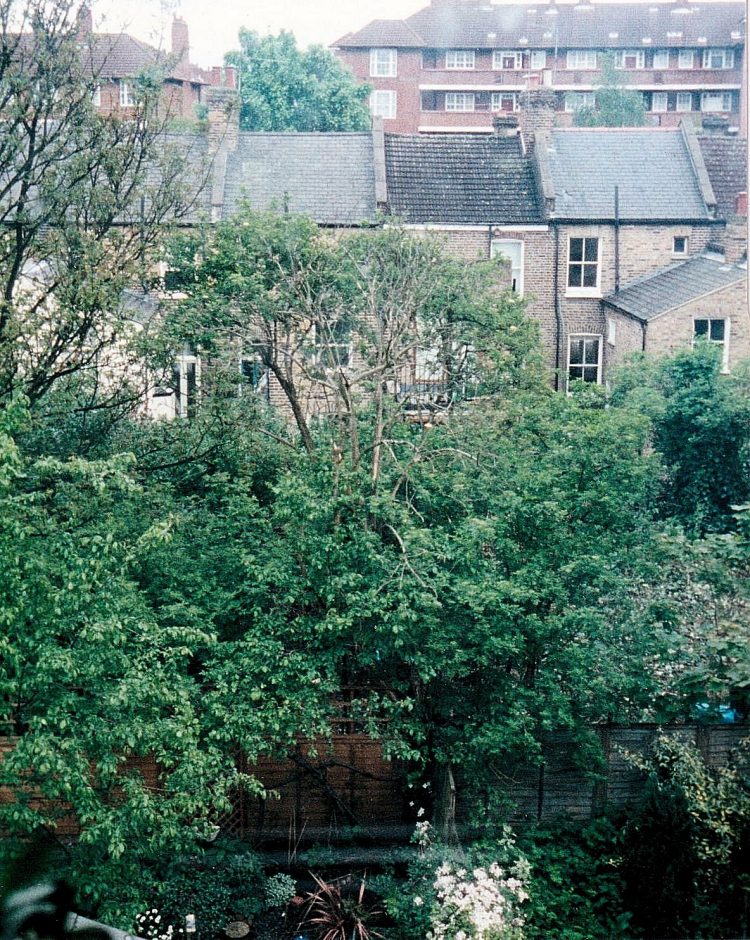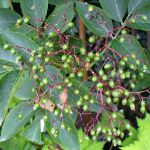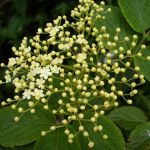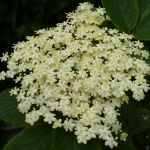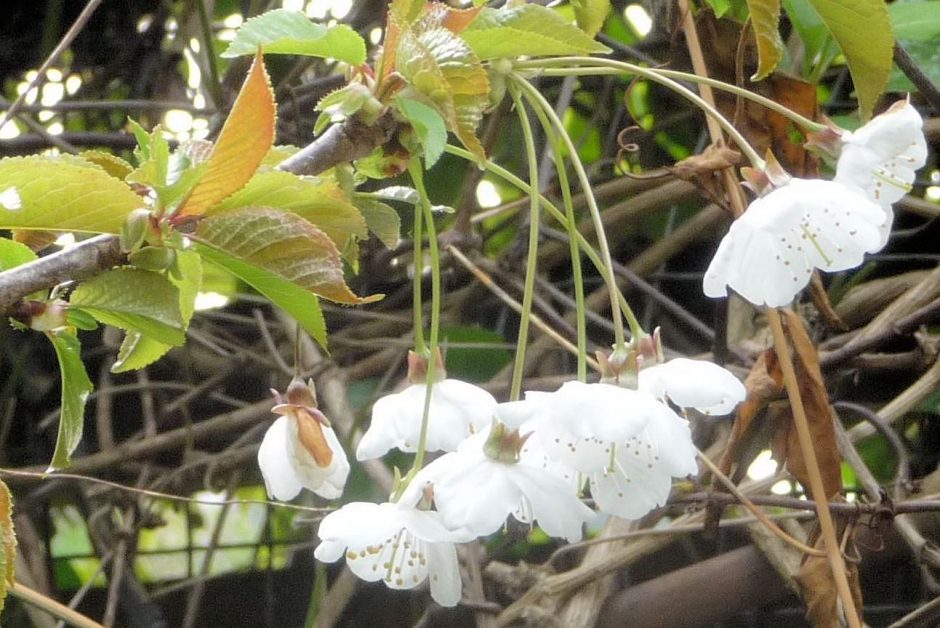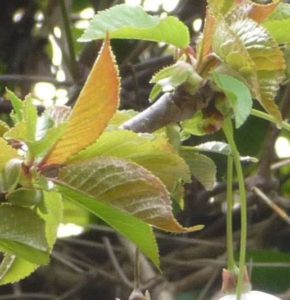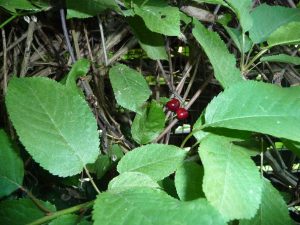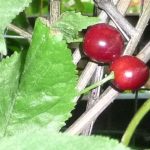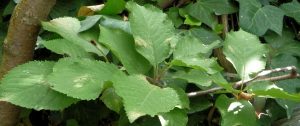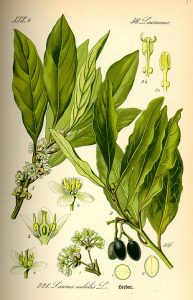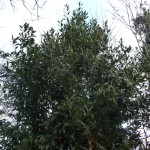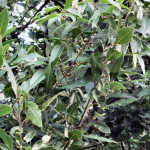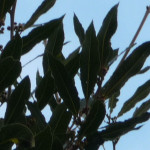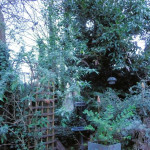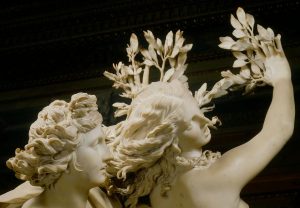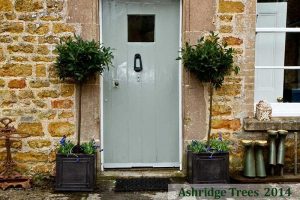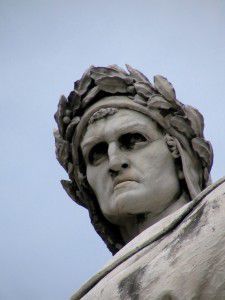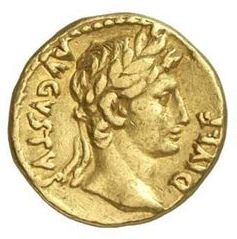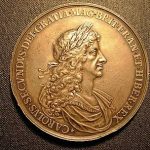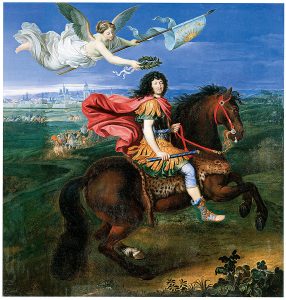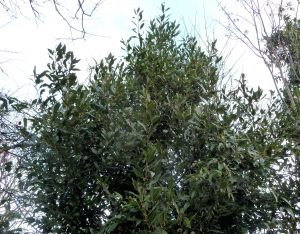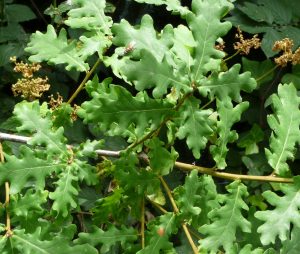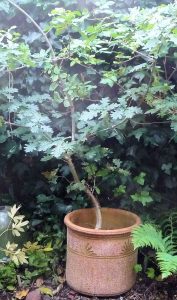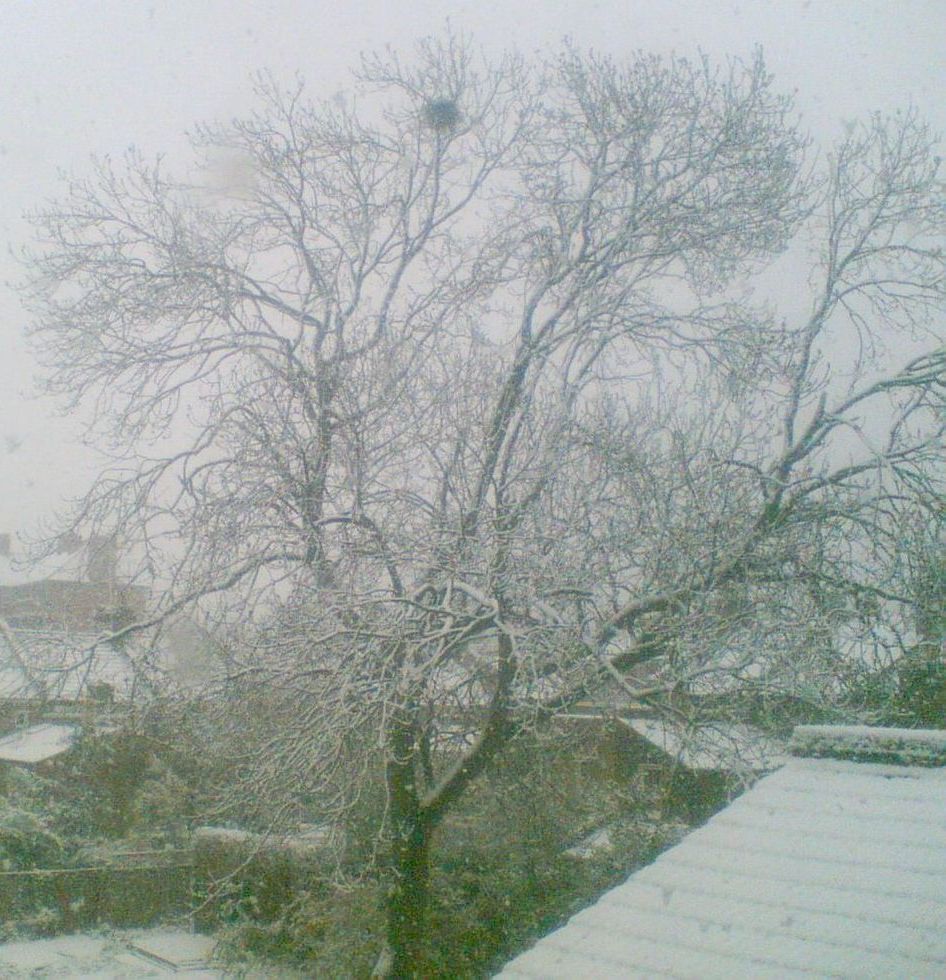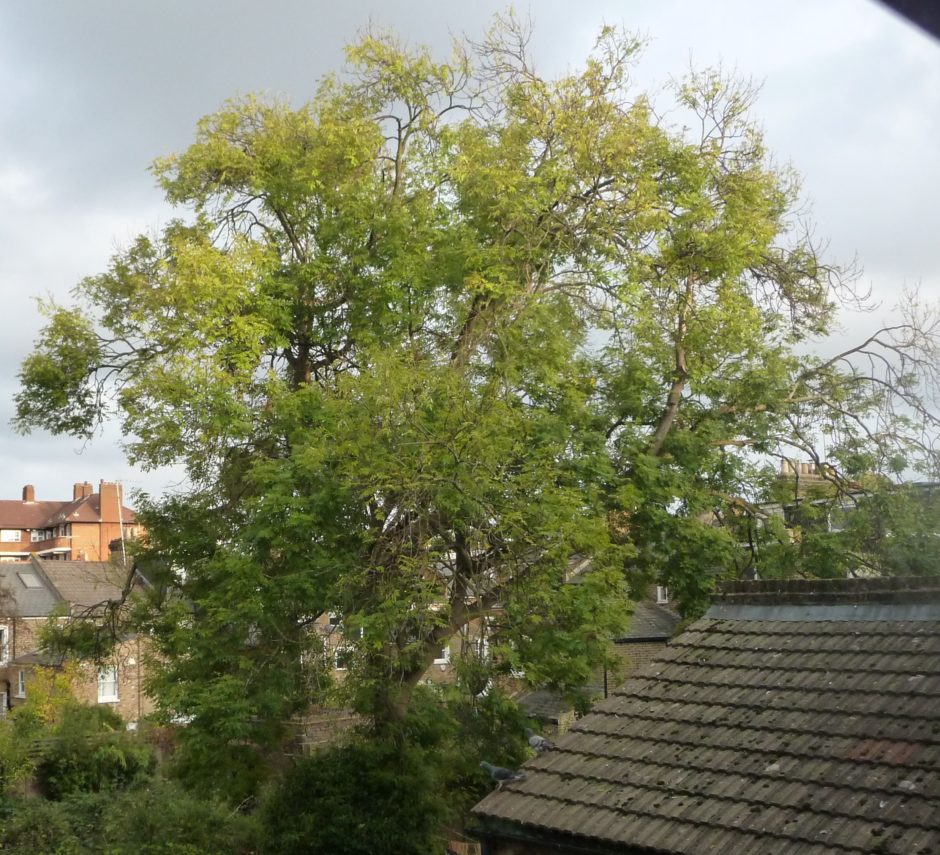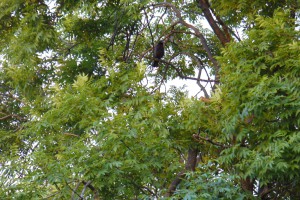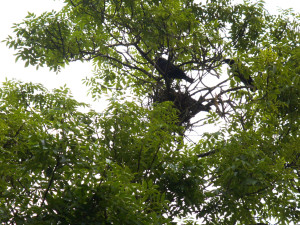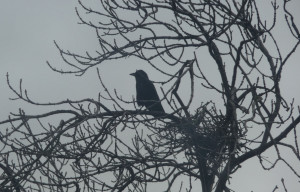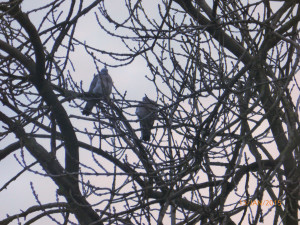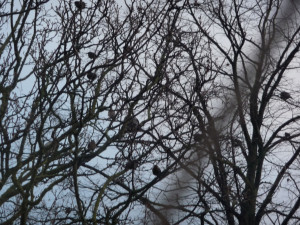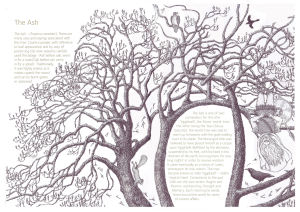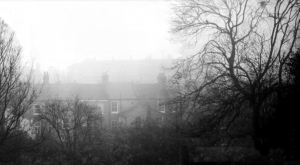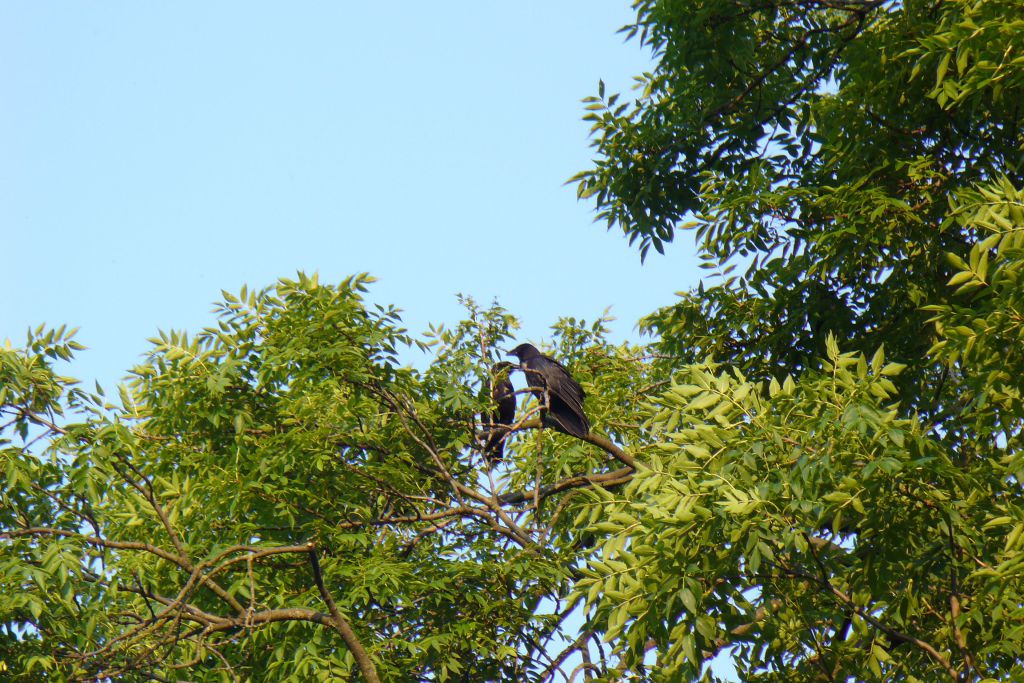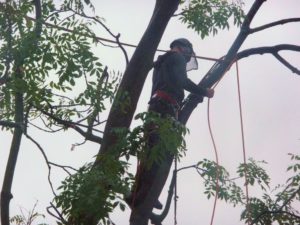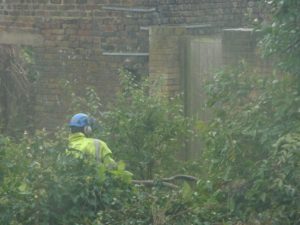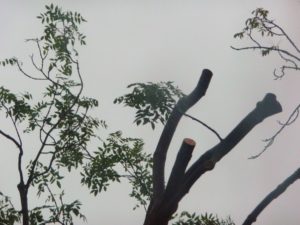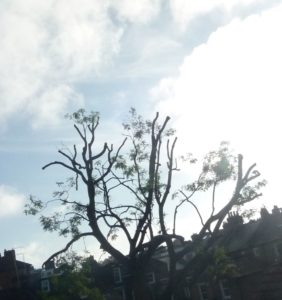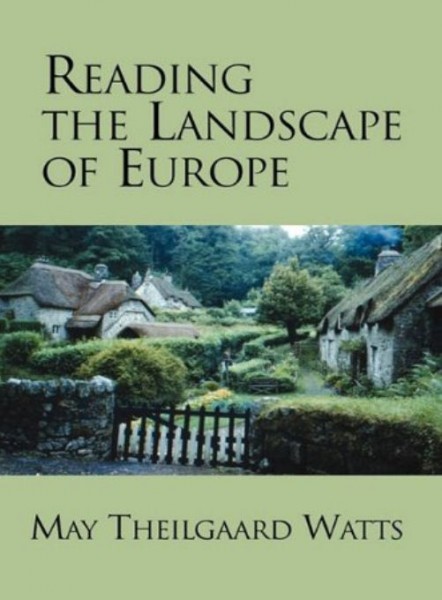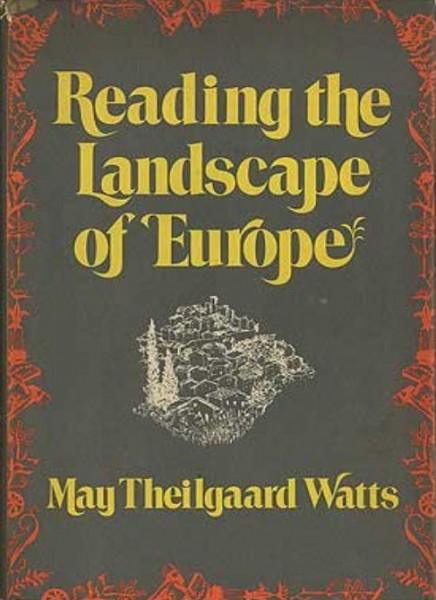In How to Make a Wildlife Garden, Chris Baines says that a tree advertises its garden as a wildlife service station. Behind our terraced house in North London, we enjoy the presence of our neighbours’ wildlife service stations which include Elder, Magnolia, Eucalyptus, Cherry & Sycamore. Our own trees are :
(Prunus domestica subsp. insititia)
Damascus, Syria
Wildlife Loves the Damson
Generations of local wildlife have made good use of this Damson tree. Its twigs & branches provide perches for birds: Blue Tits & Great Tits hang underneath, searching for insects & spiders.
Squirrels spring from branch to branch, racing up & down the trunk. When the Damsons are ripe, a squirrel will crawl out to the tip of a branch, stretching to pluck the softest one.
Gripping the plum in its jaws, it climbs back up the branch. Holding the Damson with both paws, it takes a bite & spins it round. Often eating only half of the fruit, the squirrel then drops it for other creatures on the ground to find. Birds, insects, slugs, snails will finish the job.
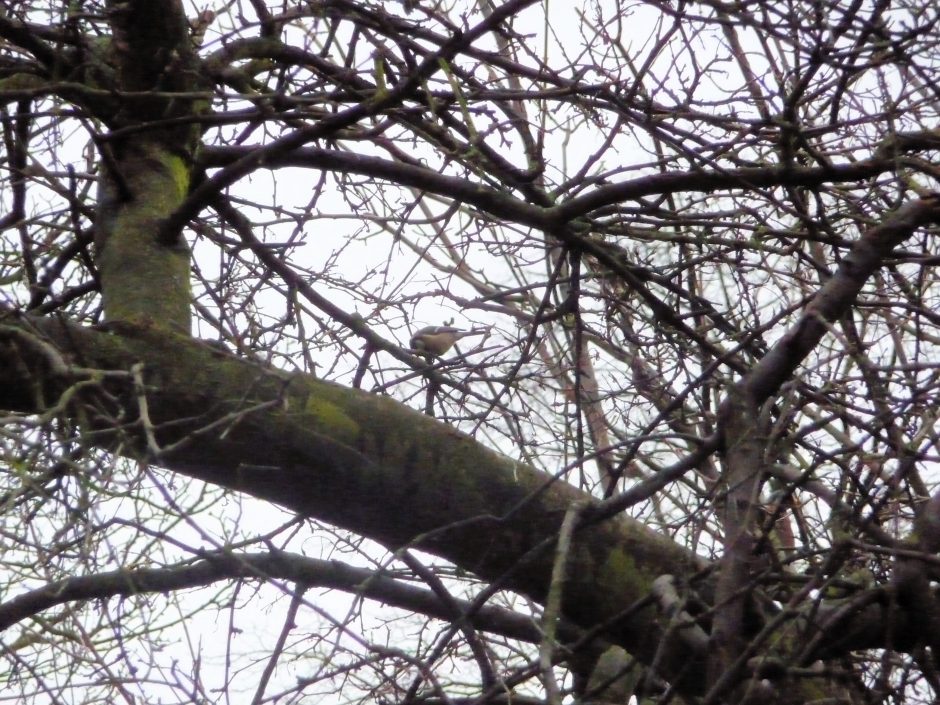
Winter damson branches with Great Tit
History
The damson tree is thought to have originated near Damascus, Syria. One theory has the Romans bringing the damson to the UK…
‘Remnants of damsons are sometimes found in archaeological digs across England, & they have clearly been cultivated, & consumed, for centuries. Damson stones have been found in an excavation in Hungate, York, & dated to the late period of Anglo-Saxon England.’
‘In addition to providing fruit, the damson makes a tough hedge or windbreak, & it became the favourite hedging tree in certain parts of the country such as Shropshire & Kent’. Elsewhere damsons were used in orchards to protect less hardy trees… ‘
The main recorded use of damsons in the industrial era was in jam-making, & orchards were widespread until the Second World War, after which changing tastes, the effect of wartime sugar rationing, & the relatively high cost of British grown fruit caused a steep decline.
The damson was introduced into the American colonies by English settlers before the American Revolution. WIKIPEDIA
Our Highbury Damson
Our damson tree, now over 25 feet tall, appears to have grown freely for years before RF took over the garden. Fruit trees should be pruned, we are told, for a better crop which is within easier reach of humans.
RF did no pruning. He found plenty of damsons in the tree’s lower branches for his chutneys & jams; plums in the upper branches were left for wildlife.
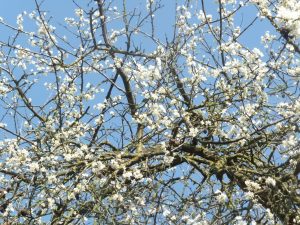 The damson’s spring glory is long gone by autumn. By then its fresh green leaves are yellowed, crisp & brown, their surfaces full of holes. RF consulted the gardening books and found that this was no disease. As the damson crop was plentiful & the plums perfect, he said we could ignore those tattered leaves.
The damson’s spring glory is long gone by autumn. By then its fresh green leaves are yellowed, crisp & brown, their surfaces full of holes. RF consulted the gardening books and found that this was no disease. As the damson crop was plentiful & the plums perfect, he said we could ignore those tattered leaves.
In 2006, heavy with fruit, a long side branch came crashing down onto the cane pergola. After small side branches were removed & added to the log pile, the branch was tied back into place.
*The Royal Horticultural Society has a website: joining with the Wildlife Trusts, its advice for gardeners who wish to encourage butterflies (such as the Red Admiral) into the garden includes leaving fallen fruit on the ground.
Butterflies: encouraging into your garden/Royal Horticultural Society
(Sambucus nigra)
You do not hear garden designers recommending the native Elder as a trendy specimen tree – there are cultivars, such as the purple-leaved Sambucus nigra ‘Guincho purple’ for that. From the little woodland at the back, when no-one was looking, native Elders quietly self-seeded themselves into our garden.
Mature trees grow to a height of around 15m and can live for 60 years. Elder is characterised by its short trunk (bole), and grey-brown, corky, furrowed bark. The leaves are pinnate (resembling a feather), with five to seven oval and toothed leaflets. After pollination by insects, each flower develops into a small, purple-black, sour berry, which ripens from late-summer to autumn. ” http://www.woodlandtrust.org.uk
Practical
” It is thought the name Elder comes from the Anglo-saxon for ‘aeld’, meaning ‘fire’; the hollow stems were used as bellows to blow air into the centre of a fire.
“As everyone knows (or ought to know), the Faery Folk love music and merrymaking, and best of all they like the music from instruments made of elder wood. Wood from the elder tree lends itself well to the making of whistles, pipes, chanters and other musical instruments, as the branches contain a soft pithy core which is easily removed to create hollow pipes of a pale, hard, easily-polished wood. (Some of elder’s many vernacular names include bour- or boretree).” Trees for Life – Mythology and Folklore*
Wildlife uses the Elder
Elder flowers provide nectar for a variety of insects. Elder foliage is food for moth caterpillars, including the White Spotted Pug, Swallowtail, Dot Moth & Buff Ermine. Birds & mammals (in this garden, squirrels & mice) eat the berries; in the countryside, Dormice & Bank Voles will eat berries & flowers.
Each spring we have the drama of Blackbirds pursuing each other all round the back gardens. These seeings-off decide who rules the territory around our garden for the next year, & who may live in our neighbour’s Elder, with the winning Blackbirds building their nest in triumph. The Elder produces corymbs of IVORY-WHITE flowers; at dusk, these flower discs seem to float in mid-air. When the elderberries follow, the Elder tree Blackbirds are well-placed to peck them up.
Medicinal
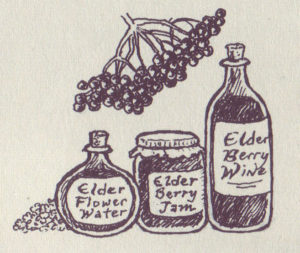 Elder has quite a reputation, acquired over centuries :
Elder has quite a reputation, acquired over centuries :
” The Elder is a small but bountiful tree, covered with edible fragrant blossoms in summer and juicy purple berries in autumn which country people have used for centuries in jams, jellies, medicinal syrups and wine. “
Mara Freeman, Tree Lore : Elder/Order of Bards and Druids
” Elder has been called ‘the medicine chest of the people’, providing remedies for most common complaints.” Demi Bown, RHS Encyclopedia of Herbs and Their Uses
Hedgerows, Hedges and Verges of Britain and Ireland
The Elder Nature’s Apothecary – Danu’s Irish Herb Garden
 https://www.youtube.com/watch?v=qyn5_QlsVLY
https://www.youtube.com/watch?v=qyn5_QlsVLY
Mythology
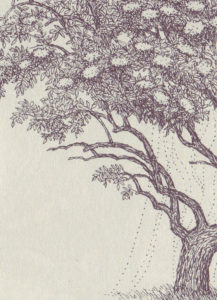 “Elder trees were also traditionally planted by bake houses as protection from the Devil (what with all those hellishly hot ovens within!) and loaves and cakes were put out to cool under the Elders. Any foods left out overnight under an Elder however were considered a gift to the fairies.” irishhedgerows.weebly.com/flora.html
“Elder trees were also traditionally planted by bake houses as protection from the Devil (what with all those hellishly hot ovens within!) and loaves and cakes were put out to cool under the Elders. Any foods left out overnight under an Elder however were considered a gift to the fairies.” irishhedgerows.weebly.com/flora.html
“Many references in folklore advise… against sleeping under an elder & it has been suspected that the strong smell of elder leaves may have mildly narcotic influences.”
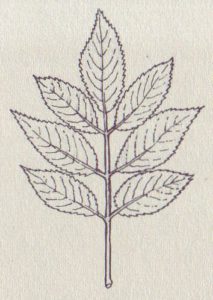 “The Elder represents… that part of us which is wise, experienced, strong & connected to the world of the unconscious… associations from Celtic mythology in which Elder governed the thirteenth & final month of the year. Her place was to guard the gates between life & death, endings & beginnings, the knowledge of the day & the mysteries of the night. Her mythology has always related to those in-between times such as Samhain (Halloween) & Midsummers Eve when you would see the Faery King ride by with his retinue, should you choose to take shelter beneath an Elder tree.
“The Elder represents… that part of us which is wise, experienced, strong & connected to the world of the unconscious… associations from Celtic mythology in which Elder governed the thirteenth & final month of the year. Her place was to guard the gates between life & death, endings & beginnings, the knowledge of the day & the mysteries of the night. Her mythology has always related to those in-between times such as Samhain (Halloween) & Midsummers Eve when you would see the Faery King ride by with his retinue, should you choose to take shelter beneath an Elder tree.
Elderberries gathered at Samhain are seen as especially potent medicinally, though there are seldom any left by late October.”
Healing advice & recipes from herbalist/naturalist Lucinda Warner‘s blog Whispering Earth. http://whisperingearth.co.uk/category/herbs/elder/
In earlier days, the Elder Tree was supposed to ward off evil influence and give protection from witches, a popular belief held in widely-distant countries. Lady Northcote says: “The Russians believe that Elder-trees drive away evil spirits, and the Bohemians go to it with a spell to take away ever. The Sicilians think that sticks of its wood will kill serpents and drive away robbers, and the Serbs introduce a stick of Elder into their wedding ceremonies to bring good luck. In England it was thought that the Elder was never struck by lightning, and a twig of it tied into three or our knots and carried in the pocket was a charm against rheumatism. A cross made of Elder and fastened to cowhouses and stables was supposed to keep all evil from the animals.”
Maud Grieve, A Modern Herbal, 1931 Botanical.com
Other names: Alhuren, Battree, Black Elder, Boure Tree, Eldrum, Ellanwood, Ellhorn, European Elderberry, German Elder, Hylder, Hyllantree (14thC), Lady Ellhorn, Old Gal, Old Lady, Pipe Tree, Rob Elder, Sweet Elder, Tree of Doom.
Remembered Remedies – Kew Gardens
Kew is collaborating with the National Institute of Medical Herbalists, Chelsea Physic Garden, Neal’s Yard, the Eden Project & the Natural History Museum in a project called Ethnomedica (or ‘Remembered Remedies’) to collect and preserve the wealth of knowledge about local uses of plants as medicines in the UK.
Collection of data began in 2003 & so far about 5,000 remedies have been gathered and entered into a database, preserving knowledge that may have otherwise been lost. Among the ‘Top 10’ remedies emerging from the project is the use of elder for treating coughs and colds.
http://www.kew.org/science-conservation/plants-fungi/sambucus-nigra-elder
Our Highbury Elder
Elder trees in the small woodland behind our terraced houses appear to have self-seeded themselves into our garden. At one time a handful of them were growing there, with one survivor reaching 30 feet in height. This Elder grew in one corner of the garden, between chain link fencing & our new larchlap fence. Wildlife loved its blossoms & berries, & the Chief Crow used it as a stage for his courting rituals every spring.
(See Living With North London Wildlife page, Crows – The Chief Crow’s Courting Tree).
We have only a few photos of this memorable tree. Its upper branches, dry & dead, rubbed together in the wind… they made a creaking sound, as though the tree was speaking.
In 2003, when it could have been 60 years old, this Elder was cut down by a developer who flattened the woodland behind our garden.
In his book, Forgotten Folklore: Myths and Magic in Islington, Richard Meyers tells of Hylde-Moer the Elder Queen, a tree spirit dwelling within every Elder, said to visit misfortune on those who disrespect her tree. Has the developer or its wrecking crew felt a tree-spirit’s spell working on them? What sort of power might a tree-spirit wield? A plague of squirrels? We’ve got that.
We now have a young Elder.. it seeded itself by the birdbath & was replanted into a large container. Now over a metre tall, these were its first flowers and elderberries.
We look forward to the goodwill of its young Elder Queen.
(Prunus Avium)
Europe, Anatolia, Western Asia, North Africa, Iran, the Caucasus
This handsome fruit tree is native to Europe and found far beyond. The Wild Cherry, which is deciduous, can reach 30m in height. Its leaves are bright green with a strongly toothed edge.
Prunus avium comes into bloom in Southeast England between April and May.
Its delicate WHITE flowers provide pollen & nectar for bees at a time when there may be little else available to them. After pollination the flowers are followed by sweet cherries. http://www.treeandlandscape.ie/Tree-A-Z/wild-cherry-prunus-avium.html
Historical: Anatolia to Rome, Flanders to Kent
‘Wild cherries have been an item of human food for several thousands of years. The stones have been found in deposits of Bronze Age settlements throughout Europe, including in Britain.’ WIKIPEDIA
Lucius Licinius Lucullus is recorded to have brought a cultivated cherry from Anatolia to Rome in 72 BC. Later, King Henry VIII, who had enjoyed the fruit in Flanders, had the cherry introduced to this country at Teynham, near Sittingbourne in Kent, England.
Herbwisdom
http://www.herbwisdom.com/herb-cherry.html
Gean and bird cherries were both used to flavour alcoholic drinks such as whisky or gin, and cherry brandy can easily be made by filling a bottle with wild cherries, adding sugar, topping up with brandy and leaving for a few months. The resin which leaks from the trunk was formerly used by children as chewing gum. It is recorded as a treatment for coughs, and when it was dissolved in wine, it was used to treat gall stones and kidney stones.
The bark was used to make fabric dyes, ranging in colour from cream to tan, while a reddish-purple colour was derived from the roots.
Paul Kendall, Trees for Life, Mythology & Folklore
Other names:
Crann silíní fiáin, Gean, Mazzard, Sweet Cherry.
The spring flowers provide an early source of nectar & pollen for bees. The cherries are eaten by birds, including blackbird & song thrush, as well as mammals such as badger, wood mouse, yellow necked mouse & dormouse.
The foliage is the main food plant for caterpillars of many species of moth, including the Cherry Fruit & Cherry Bark Moths, the Orchard Ermine, Brimstone & Short Cloaked Moth.
woodland trust
https://www.woodlandtrust.org.uk/visiting-woods/trees-woods-and-wildlife/british-trees/
Here in Highbury, our Wild Cherry tree self-seeded itself in Gillespie Park’s front meadow some years ago. Conservation Ranger Richard Meyer asked if we could give it a home, and we agreed. It currently lives in a container in the southeast corner of the garden. We have found it to be a thirsty tree whose leaves will droop when it wants a drink. Its branches are favourite perches for our birds, especially the Robins and Starlings.
http://www.riverofflowers.org/wild-city-blog/trees-feed-bees
BAY LAUREL
(Laurus nobilis)
Mediterranean Region
Laurus nobilis is an aromatic evergreen tree from the Mediterranean. Its leaves are a glossy dark green with a leathery texture – each up to 4 inches 10cm) long. It is used in cooking, for hedging & in topiary. It can remain in a container, trained as a standard; planted in the ground it can grow to over 12 metres.
” Native to the Mediterranean region, Laurus is from the Latin laus, “praise”, and refers to the crown of bay leaves worn by victorious Romans. It is an important ingredient of sweet and savory dishes in European cuisines. Its brittle, dried leaves are taken internally for indigestion, poor appetite, colic and wind. Externally for dandruff, rheumatism, sprains, bruises… “Demi Bown, RHS Encyclopedia of Herbs and Their Uses
Historical – Legendary
Ancient Greece
By legend the Greek god Apollo was pursuing Daphne, naiad daughter of a river god, when she was transformed into a Bay Laurel tree to escape him.
The Pythian games in Delphi were created by Apollo in the 6th century BC, after he slew the serpent Python. Winners were awarded a crown of Laurel leaves, sacred to Apollo. WIKIPEDIA
‘The ancient Greeks believed that it warded off poisons & sorcery so they would plant bay trees on either side of their front door, a tradition that has spread & which continues to this day’. https://www.ancient-symbols.com/bay-tree.
Ancient Rome
‘The laurel is a bringer of peace, inasmuch as to hold a branch of it out even between enemy armies is a token of cessation of hostilities. With the Romans especially it is used as a harbinger of rejoicing & of victory, accompanying despatches & decorating the spears & javelins of the soldiery & adorning the generals’ rods of office. From this tree a branch is deposited in the lap of Jupiter the All-good & All-great whenever a fresh victory has brought rejoicing, and this is not because the laurel is continually green, nor yet because it is an emblem of peace, as the olive is to be preferred in both respects, but because it flourishes in the greatest beauty on Mount Parnassus, & consequently is thought to be also dear to Apollo, to whose shrine even the kings of Rome at that early date were in the custom of sending gifts & asking for oracles in return.’
Pliny, Historia Naturalis, Book XV 133 Gardening at the Cloisters, The Medieval Garden Enclosed, The Metropolitan Museum of Art, New York Medicinal Plants jan 2012 metmuseum.org/cloisters
‘Roman culture held the Laurel as a symbol of victory. It was also associated with immortality, with ritual purification, prosperity and health.’ WIKIPEDIA
‘The bay tree was such an important symbol that the Romans believed that lightning would avoid any area where a bay tree was planted. Emperor Tiberius would wear a crown of bay leaves whenever it rained to avoid being struck by lightning.
https://www.ancient-symbols.com/bay-tree
‘..said to resist the evils ruled by the planet Saturn and if kept in the house and hung over doorways will keep away poltergeists. It was used in magic rituals during the Middle Ages to keep away evil and resist witchcraft.. Jeanne Rose’s Herbal, Herbs & Things, Grosset & Dunlap 1973.
The Laurel Wreath
Angels & an eagle hover over rulers to place laurel wreaths on the heads of Louis XIV of France, the young Charles II of Spain, & Charles I of England.
In London, above the Wellington Arch on Hyde Park Corner, Victory over Napoleon at Waterloo is commemorated. Nike, the Greek Goddess of Victory, descends on the Quadriga, the four-horsed chariot of war, holding a laurel wreath in one hand and an olive branch in the other.
Other Uses
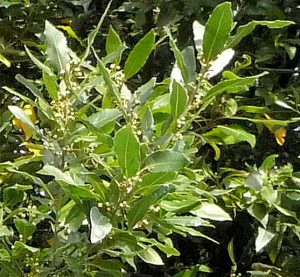 Bay leaves can be used alone or in combination with other herbs to repel insects. Methods include burning, decoction, tinctures, & being combined with peppermint, garlic, chamomile, wormwood, tansy and lavender. How to use Bay leaves to repel insects – Pestey – Mozilla Firefox
Bay leaves can be used alone or in combination with other herbs to repel insects. Methods include burning, decoction, tinctures, & being combined with peppermint, garlic, chamomile, wormwood, tansy and lavender. How to use Bay leaves to repel insects – Pestey – Mozilla Firefox
The Amazing Benefits of Bay Leaves / THE GARDEN RECIPE: https://www.thegardenrecipe.com/health/bay-leaf-benefits
Our Highbury Bay Tree
This Bay Laurel, a gift for RF from a friend, was planted about 2002. Soil in its bed was replaced with the sacred Glastonbury compost from the Mix shop on Blackstock Road.

 Now, over two decades later, the Bay is a tree. Its leaves are trimmed back when needed for cooking, & it acts as a windbreak for the Northeast corner of the garden
Now, over two decades later, the Bay is a tree. Its leaves are trimmed back when needed for cooking, & it acts as a windbreak for the Northeast corner of the garden
(Quercus robur)
Northern Hemisphere
We have two small oaks, grown from acorns from Farnborough Hampshire.Hawthorn weevils had broken into a handful of others & only these survived winter, grown in small pots in clay soil from the garden. The buried acorns avoided discovery by our squirrels, who enjoy finding & eating nuts & seeds… ‘You meant these for us! How kind of you!’
The oaks are temporarily in two large containers from the Garden Centre at Alexandra Palace.
The ruling majesty of the woods, the wise old English oak holds a special place in our culture, history, and hearts. It supports more life than any other native tree species in the UK; even its fallen leaves support biodiversity. Woodland Trust
Importance to Wildlife
Over 284 insect species find their way to oak trees in the UK – young saplings in urban areas, as well as mature oaks in parks & the countryside. It came as a surprise to find Oak Spangle Galls on the underside of our young oaks’ leaves… A Gall Wasp had found them, however urban our secluded garden, & laid its eggs…
THE GREEN MAN
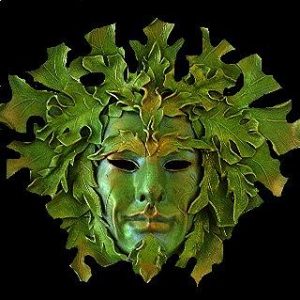
Green Man Painting – at PaintingValley.com
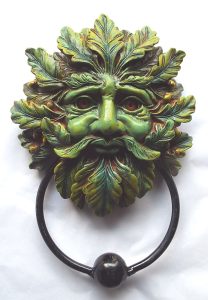
green man door knockers at otherwisetrading.com.
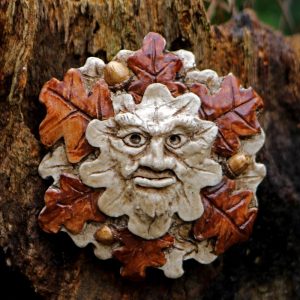
oak green man.com
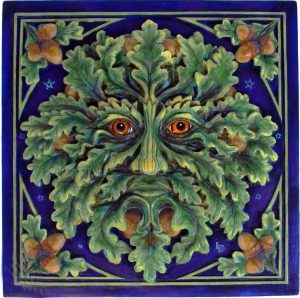
Oak Leaf and Acorn Green Man Plaque – otherwisetrading.co.uk
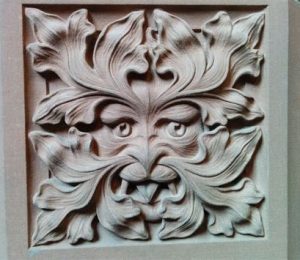
the green man free images pixhere.com
www.bbc.com/culture/article/20190104-the-surprising-roots-of-the-mysterious-green-man
The prehistoric Indo-European tribes worshipped the Oak and connected it with a thunder or lightning god, and this tradition descended to many classical cultures. In Norse mythology the oak was sacred to the Thunder God, Thor. In Greek mythology, the oak is the tree sacred to Zeus, king of the gods. In Zeus’s oracle in Dodona, Epirus, the sacred oak was the centerpiece of the precinct, and the priests would divine the pronouncements of the god by interpreting the rustling of the oak’s leaves. Wikipedia
(Fraxinus excelsior)
British Isles to Mainland Europe
This majestic Ash tree is several gardens away, but it dominates all nearby trees & back gardens. It is probably older than our Victorian houses, which could date to the 1880’s. Its topmost branches and Crows’ nest would have been on a level with fans sitting in the upper tier of Highbury Stadium’s North Bank across the street.
For many years the Ash has been the Crow’s Nesting Tree (See North London Wildlife – Crow page for crow courtship involving the Ash.) Squirrel chases along the back fences end when the first squirrel leaps onto the Ash’s trunk, followed by the pursuing squirrel; they chase each other diagonally round & round before one of them springs to the ground & runs away….
Many birds use the Ash – some, like the Blue Tits & Great Tits, search the branches for insects. Others – Crows, Magpies, & Wood Pigeons – perch in its branches.
Flocks of winter Fieldfares, visiting from Scandinavia, land in the Ash’s upper branches, all perched with beaks pointing West. For January’s RSPB Big Garden Birdcount, Starlings are easier to count when silhouetted in midair as they plummet from the Ash to our feeders.
The Ash supports over 100 insect species and can live for centuries. Anglo-Saxons used its wood to make spears and tools. Often the last British tree to come into leaf in spring and the first to lose its leaves in autumn, the Ash has a place as a weather forecaster in an adage of country folk predicting spring and summer rainfall :
” Ash before Oak, we’re in for a soak… Oak before Ash, we’re in for a splash. “
In his book, ‘Forgotten Folklore – Myths and Magic in Islington‘, Richard Meyers tells of Yggdrasil, the Norse World Tree, which was Odin’s tree. Its branches reached up to heaven & the gods held court in its shade. The drawing of The World Tree in the book was based on our Highbury Ash.
Other names: Common Bird’s Tongue, European Ash, Fuinseog, Weeping Ash.
The developer’s crew who trashed our little woodland told a neighbour that this tree was an Elder, a short-lived tree that would have to come down. We now know our Ash from our Elder – our tenants’ association got the tree a TPO, a Tree Protection Order, to give it some protection. But even with its TPO, some of its limbs have been removed.
In December 2014, architects who bought the land on which the Ash grows applied to the Council for permission to remove it.
The original developer’s plans to build on the site led to a 2009 Public Inquiry in Islington Council Offices. The Inspector, chosen by the Secretary of State for Communities and Local Government, rejected the appeal. One of her points was the importance of mature trees to the site :
“Partly due to the openness in the gardens to the terraced dwellings and over the site, tall and prominent trees have prospered. They are visible through the gaps at the ends of the terraces, and they make an important contribution to the character and appearance of the area.”
Inspector Joanna C. Reid, Appeal Decision, Appeal Ref: APP /V5570 / A / 08 / 2080874, Decision Date 7 April 2009
The Planning Inspectorate, 4/11 Eagle Wing, Temple Quay House, 2 The Square, Temple Quay, Bristol BS1 6PN
Islington Council rejected the architects’ proposal to remove the Ash.
OCTOBER 6th 2019 – New date by which we must submit objections to the council, about the Architects’ latest application for permission to build on the land. First, allowing us 2 days notice, they moved in and cut back this majestic Protected Ash, just to assert their dominion over it.
If you value a tree near you, don’t take its continuing presence for granted. Find out whether or not it has a Tree Protection Order. If it does not, apply for one on its behalf. And if there are threats to the existence of that tree, do what you can to save it. Don’t leave its future in the hands of architects and developers.
Reading the Landscape of Europe
May Theilgaard Watts, Harper & Row, 1971
May Theilgaard Watts was an ecologist, illustrator, writer & staff naturalist at the Morton Arboretum in Wisconsin, USA. Her insights into Britain and six European countries focus on their geology, folktales, wildlife & plantlife. A detailed pictorial supplement at the back of the book shows how to identify trees; many trees that we regard as exclusively British grow in Europe as well.
Both hard cover & paperback versions of this book are still in print.
VisitWoods is the UK’s largest online database of woodlands accessible to the public, including woodlands owned by the National Trust, RSPB, Wildlife Trusts & Forestry Commission:
http://www.visitwoods.org.uk
